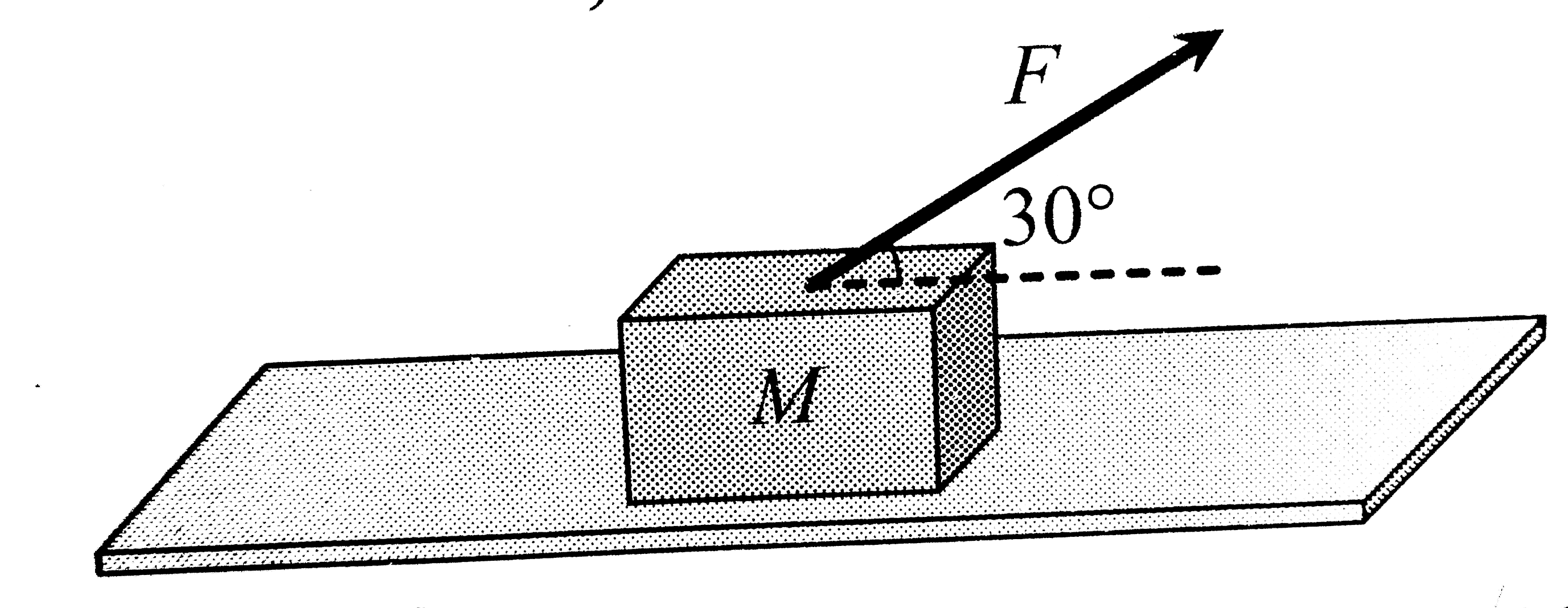A lorry of mass 2000 kg is traveling up a hill of certain height at a constant speed of 10 m/s. The frictional resistance is 200 N, then the power expended by the coolie is : (g=10m/s2)
To solve the problem step-by-step, we need to calculate the power expended by the coolie while the lorry is traveling up the hill. Here’s how we can do it:
Step 1: Identify the Given Information
- Mass of the lorry (m) = 2000 kg
- Speed of the lorry (v) = 10 m/s
- Frictional resistance (F_friction) = 200 N
- Acceleration due to gravity (g) = 10 m/s²
Step 2: Calculate the Total Force Acting Against the Motion
When the lorry is moving up the hill at a constant speed, the net force acting on it is zero. The forces acting against the motion are the frictional force and the component of gravitational force acting down the slope. Since we are not given the height or angle of the hill, we will only consider the frictional force for this calculation.
Total force (F_total) = Frictional force = 200 N
Step 3: Calculate the Power Exerted Against the Frictional Force
Power (P) is defined as the work done per unit time. When a force is applied to move an object at a constant speed, the power can be calculated using the formula:
P=F⋅v
Where:
- P is the power
- F is the total force acting against the motion (in this case, the frictional force)
- v is the velocity of the lorry
Substituting the values:
P=200N⋅10m/s
Step 4: Perform the Calculation
P=2000W
Step 5: Convert Power to Kilowatts
Since power is often expressed in kilowatts (kW), we can convert watts to kilowatts:
P=2000W1000=2kW
Final Answer
The power expended by the coolie is 2 kW.
---
- Mass of the lorry (m) = 2000 kg
- Speed of the lorry (v) = 10 m/s
- Frictional resistance (F_friction) = 200 N
- Acceleration due to gravity (g) = 10 m/s²
When the lorry is moving up the hill at a constant speed, the net force acting on it is zero. The forces acting against the motion are the frictional force and the component of gravitational force acting down the slope. Since we are not given the height or angle of the hill, we will only consider the frictional force for this calculation.
Power (P) is defined as the work done per unit time. When a force is applied to move an object at a constant speed, the power can be calculated using the formula:
- P is the power
- F is the total force acting against the motion (in this case, the frictional force)
- v is the velocity of the lorry
P=2000W
Since power is often expressed in kilowatts (kW), we can convert watts to kilowatts:
The power expended by the coolie is 2 kW.
Topper's Solved these Questions
- WORK ENERGY AND POWER BOOK - VMC MODULES ENGLISHCHAPTER - WORK ENERGY AND POWER EXERCISE - ENABLE
50 Videos
- WORK ENERGY AND POWER BOOK - VMC MODULES ENGLISHCHAPTER - WORK ENERGY AND POWER EXERCISE - EFFICIENT
50 Videos
- WAVE MOTIONBOOK - VMC MODULES ENGLISHCHAPTER - WAVE MOTIONEXERCISE - JEE ADVANCED ARCHIVE LEVEL 2 (TRUE FALSE TYPE)
4 Videos
Similar Questions
A stone of mass 1 kg tied to a string 4 m long and is rotated at constant speed of 40 m/s a vertical circle. The ratio of the tension at the top and the bottom, is (g=10 m/s2)
View SolutionA 1kg stone at the end of 1m long string is whirled in a vertical circle at a constant speed of 4m/s. The tension in the string is 6N, when the stone is at (g=10m/s2)
View Solution
Knowledge Check
A force of 200N is required to keep an object sliding at a constant speed of 2 m/s across a rough floor. How much power is being expended to maintain this motion?
A50WB100WC200WD400W
A coolie 1.5 m tall raises a load of 80 kg in 2 sec from the ground to his head and then walks a distance of 40 m in another 2 second. The power developed by the coolie is : (g=10m/s2)
View SolutionA body of mass 10 kg moving at a height of 2 m, with uniform speed of 2 m/s. Its total energy is
View SolutionRajan exerts a force of 150 N in pulling a cart at a constant speed of 10 ms−1 .Calculate the power exerted.
View SolutionA ball is thrown at a speed of 20 m/s at an angle of 30∘ with the horizontal . The maximum height reached by the ball is
(Use g=10m/s2)
View SolutionBlock of mass 10 kg is moving on inclined plane with constant velocity 10 m/s. The coedfficient of kinetic friction between incline plane and block is :-
View SolutionA block of mass m=5kg is resting on a rough horizontal surface for which the coefficient of friction is 0.2 . When a force F=40N is applied, the acceleration of the block will be (g=10m/s2) .

View SolutionA rocket of mass 5700 kg ejects mass at a constant rate of 15 kg/s withe constant speed of 12 km/s. The acceleration of the rocket 1 minute after the blast is (g=10m/s2)
View Solution
